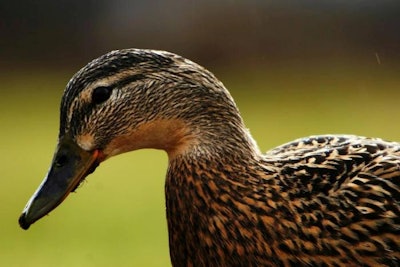
Winter is coming to North America and so are the migratory birds that might be carrying highly pathogenic avian influenza.
On December 1, Dr. Tom DeLiberto, an expert on avian influenza, spoke with WATT Global Media about the potential for the disease to spread in the winter migratory season. The assistant director of the U.S. Department of Agriculture Animal and Plant Health Inspection Service’s (USDA APHIS) National Wildlife Research Center in Fort Collins, Colorado, said cold temperatures in northern Canada are pushing migratory birds and waterfowl known to carry strains of the potentially devastating virus south.
DeLiberto said the migratory period began in early December and, while migration can be unpredictable, it will likely last through the end of the month. As the birds are on the move, he encouraged poultry farmers to maintain strict biosecurity standards to avoid spreading the disease.
Avian influenza in wild birds
Poultry farmers, particularly in the turkey and egg industries located in the central and upper Midwestern states know how serious the disease can be. During the 2014-2015 highly pathogenic avian influenza (HPAI) outbreak, millions of birds died and farmers dealt with tremendous financial impacts related to the disease. The outbreak lead to a greater focus on biosecurity throughout the U.S. poultry industry.
Since the major outbreak, and a small outbreak in Indiana in January 2016, avian influenza only appeared once in U.S. wild bird populations. DeLiberto said a duck near Fairbanks, Alaska, was found to have the disease in August 2016. He said the detection was an early warning to remind everyone while the disease hasn’t been detected, it’s still circulating in the wild bird population.
DeLiberto said the disease is likely less prevalent among wild birds than it was in 2015, but the question is whether the disease will fade away over time or find the right conditions to make a resurgence.
“Influenzas are known for their abilities to kind of cycle – come back and die off and come back – so it’s possible that these viruses are just waiting for the right environmental conditions to increase in their prevalence,” DeLiberto said in an interview. “If that happens, then we may see outbreaks like we saw in 2015.”
Risks of disease spread through migration
DeLiberto said these bird populations are dangerous for poultry farmers because they can be infected with the disease, and spread it, without any effects on their health. Although the birds are likely to carry the disease through their migratory flyways, it is unclear whether it’s high or low pathogenic. The same birds fly over wide swaths of the continent and some will go as far south as Ecuador in the west or the Caribbean in the east.
The ever capricious winter weather can also play a large role in how long the birds linger in one part of the country during their migration. DeLiberto said the birds will stay where there isn’t a snowpack and ice. A warmer winter can give birds food and a habitat further north, placing them in key egg producing states. A colder winter may push them further south toward broiler producing states.
The birds are likely to make their return to the northern part of the continent between late February and March.
The continuing importance of biosecurity
DeLiberto said the migration period means poultry farmers need to do the best possible job on biosecurity. Good biosecurity practices, he said, will dramatically reduce the risk of avian influenza transmission.
Migratory birds are thought to spread the disease through their droppings, so farmers should take steps to keep bird droppings away from feed and keep farm equipment clean. DeLiberto, a duck hunter and birder himself, said farmers and farm workers who hunt waterfowl and migratory birds should be careful not to bring clothes, boots, vehicles or other hunting equipment onto the farm where the disease could enter the poultry house.
DeLiberto said the USDA and partner organizations will continue to watch for the presence of the disease through its year-round national monitoring program. A comprehensive overview of the organization’s 2016 HPAI monitoring plan can be read here.
The 2014-2015 outbreak called greater attention to biosecurity, and WATT Global Media has published a number of articles offering tips on improving operational biosecurity and reducing the risk of disease transmission:

















